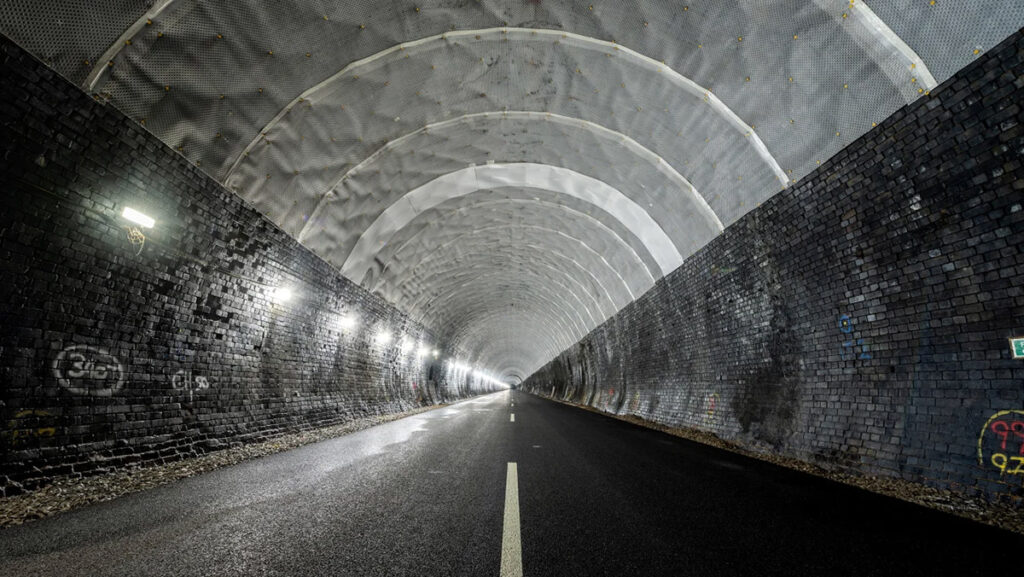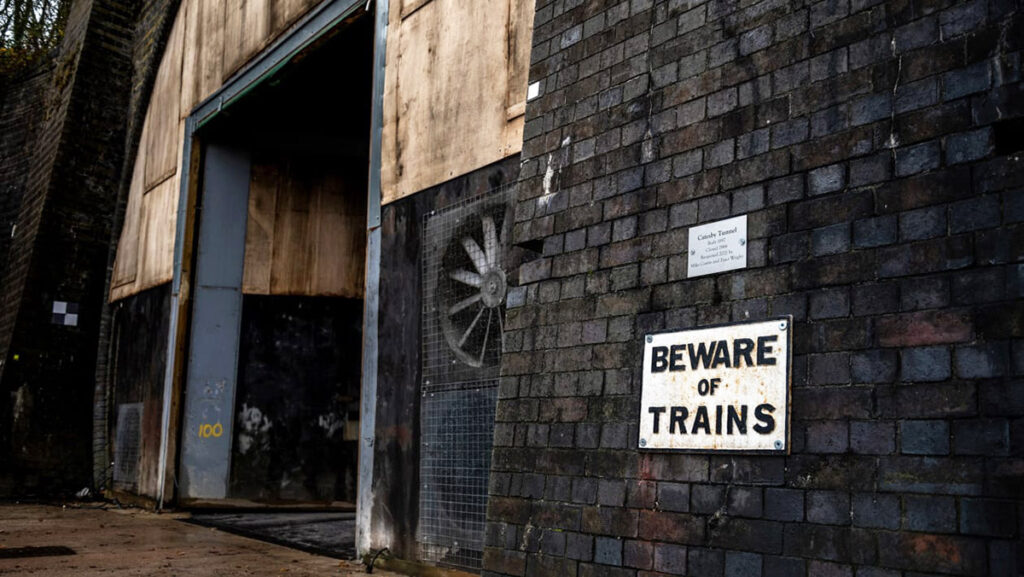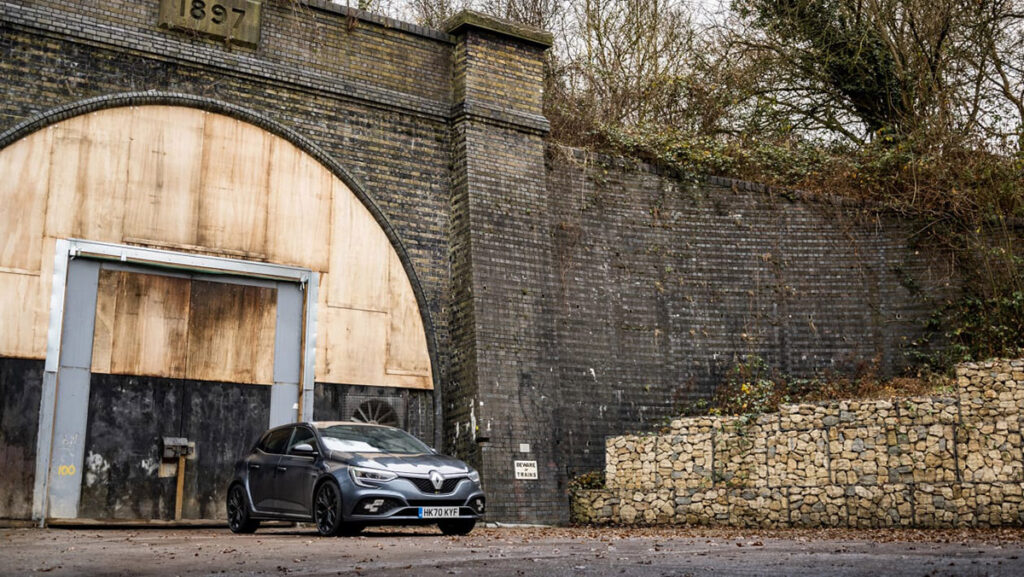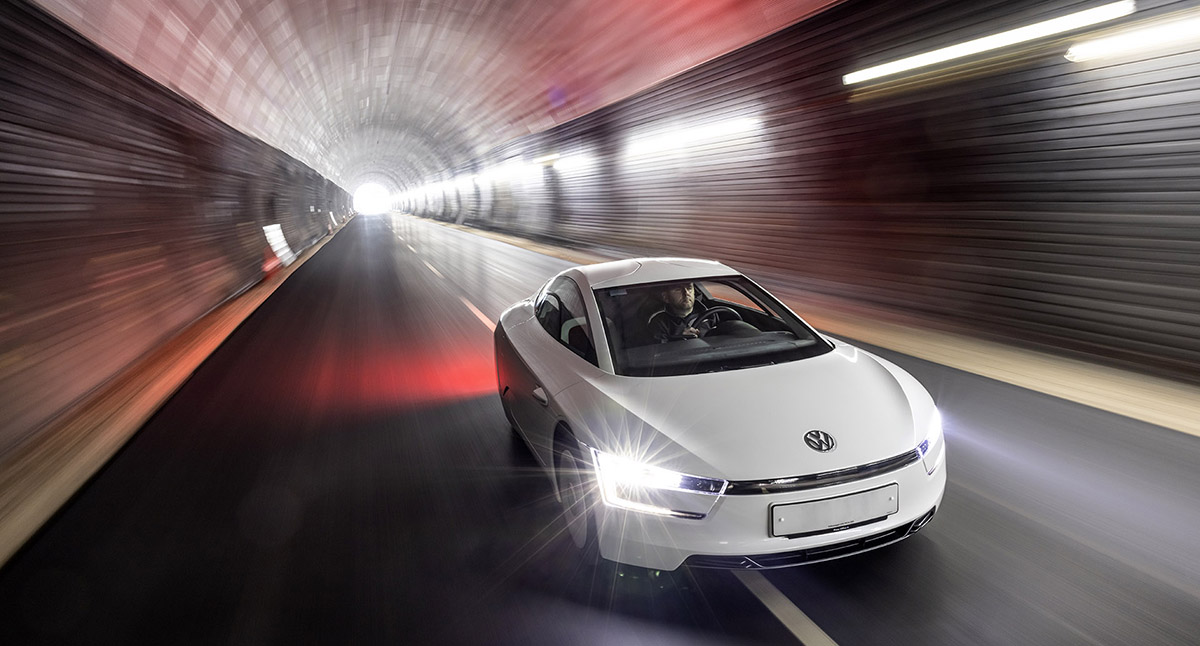Testing in a Railroad Tunnel
Readers of this Journal may remember that I’ve been dreaming of testing tires in an abandoned railroad tunnel. A bit of background: We’ve known for a long time that testing tires on drums in the lab produces misleading results. Without a rider on the bike, you can’t measure the suspension losses caused by vibrations of rider and bike. And that means your data will suggest that stiffer tires at higher pressures roll faster. In the real world, the opposite is true.
That’s why we’ve been testing tires out in the real world. Real-road testing has revolutionized our understanding of tire performance. When you see the riders in this year’s Tour de France on 25 or even 28 mm tires at 80 psi or less—rather than 20 or 23 mm inflated to 120+ psi—it’s because of these real-road tests.
The downside is that it takes a huge effort to get good data. Small changes in wind, temperature, and/or rider position have the same effect as performance differences between tires. To get useful data, we have to eliminate all those variables. (Just riding bikes with a power meter and switching tires is not going to work!) This means we can test only when there is absolutely no wind and when temperatures are constant. We also need to find a testing road with a constant gradient (for rolldowns) or totally flat (for power meter tests). We need to make sure our rider can assume the same position time and again. (We tested that in a wind tunnel to make sure.) All this means that we can test only on a few days every year. And quite often, we mobilize everything at 5 a.m. (because the air is calmest around sunrise), only to have a very light breeze spring up. Then we cancel our test session and try another day.

That got me dreaming: What if we could test inside an abandoned railroad tunnel? The gradient would be constant. (Railroads don’t like changes in slope.) If we put doors on the ends, there would be zero wind. The temperature inside the mountain is constant year-round. We’d pave the surface with lanes of asphalt that vary in roughness. Maybe include a carefully curated gravel surface. Build a small chalet nearby where we can stay during the testing and prep the bikes. We could get an amazing amount of testing done relatively quickly.

Turns out we aren’t the only ones thinking along those lines. In Britain, the Catesby railroad tunnel, abandoned since the 1960s, has now been converted into a testing facility for cars. Why test in a real tunnel instead of a wind tunnel? If you put a car in a wind tunnel, the wheels don’t turn. When the car moves on a real road, the spinning tires create turbulences inside the fenders that affect airflow and drag. There are wind tunnels with rolling roads, but they create their own problems. All those fixtures—plus the ones you need to anchor the car—mess up the airflow, which affects your results. Another problem is that most wind tunnels are a bit small, so the car inside creates an obstruction that gives false measurements. (Effectively, the car is like a plug inside the tunnel.)

Size isn’t a problem with a two-track railroad tunnel—the cross-section is huge. Catesby Tunnel is 2.7 km long, with a constant gradient of 0.6%, so you can do roll-down tests of cars. That way, you get much more accurate results than you’d ever get in a wind tunnel. For car makers, the fact that it’s in a tunnel has an added advantage: Top-secret prototypes cannot be seen and photographed. And finally, because it’s ‘just’ an old tunnel, it’s a lot less expensive than renting a huge wind tunnel. A day in Catesby Tunnel costs ‘just’ £15,000, and if you’ll test bikes at low speeds (and don’t need a fire crew), it’s only £1,000 per hour. Certainly less than converting your own tunnel!
Are we tempted to test bicycle tires there? Getting all things we want to test to Britain would take as much effort as waiting for perfect test conditions here in Seattle. In the end, we’d get the same results. Still, I have to admit to a case of ‘tunnel envy.’ Most of all, I find the whole project and the ideas behind it fascinating. Even in the car world, real-world testing under carefully controlled conditions is the way to go. It produces better results that the most sophisticated wind tunnels and lab equipment.
More Information:



